Construction telematics is one of those technologies that quietly moves from “nice-to-have” to “mission-critical” once a contractor runs a mixed fleet across multiple jobsites and realizes how costly dark spots in visibility are. At its heart, construction telematics is the practice of collecting, transmitting, and analyzing data from mobile construction machinery and vehicles so owners, fleet managers, and project teams can make faster, smarter, and lower-cost decisions about equipment, maintenance, safety, and utilization.
This guide is a practical deep dive, what telematics is, how it works, the data that matters, real operational use cases, typical benefits and ROI, implementation best practices, common pitfalls, relevant industry standards, and where the technology is headed (spoiler: AI and electrification are big). If you manage equipment, rental fleets, or construction projects, this is a toolkit you’ll want to bookmark.
What Is Construction Telematics?

Definition (short): Construction telematics ties sensors and onboard computers on machines to cloud services and dashboards that turn raw signals (location, engine hours, fuel level, error codes, etc.) into operational intelligence: who’s using what, how it’s performing, and when it needs attention.
Core components
- Onboard hardware (telemetry units): rugged devices or factory-built telematics modules that read data from the machine (CANbus/J1939, direct sensors, GPS, IMU). These devices capture engine data, fuel usage, hours, location, operator ID, and more.
- Connectivity layer: cellular (4G/5G/LTE-M/NB-IoT), satellite (for remote jobs), or local gateways that push data to the cloud.
- Cloud ingestion & storage: scalable servers that receive, normalize, and store time-series and event data.
- Analytics & rules engine: the layer that turns events into alerts, utilization reports, and predictive maintenance signals.
- User interfaces & integrations: dashboards, mobile apps, APIs, and integrations into ERP, maintenance, rental, or project-management systems.
Modern telematics platforms can be either OEM-provided (factory-installed modules and dashboard tied to a brand) or third-party platforms that support mixed fleets. OEM systems often have deeper diagnostic access to certain machine brands, while third-party platforms excel at mixed-fleet aggregation and vendor-neutral analytics. Examples of both OEM offerings and neutral platforms are now mainstream in the industry.
Also read: 7 Highly Recommended Bali Contractors for Foreign Investors in 2025
What telematics measures (the important signals)
Not all telemetry is equal. Here are the typical signals that deliver the most value:
- Location & geofencing: real-time position, geofence entry/exit, site presence.
- Engine hours & runtime: main metric for utilization and maintenance scheduling.
- Fuel consumption & fuel level: used to detect theft, idling, and inefficiencies.
- Idle time and utilization percentage: to identify underused or wasted hours.
- Diagnostic trouble codes (DTCs) and alarms: engine fault codes and alerts.
- Operator behaviour: seatbelt use, harsh acceleration/braking, PTO use, and unauthorized operation.
- Attachment & payload sensors: for tasks like load weighing or cycle counting on excavators and loaders.
- Environmental and machine health telemetry: temperatures, oil pressure, hydraulic status.
Standards and data dictionaries have converged on a common set of parameters to enable mixed-fleet dashboards and integrations. Following those standards is essential when you want a single pane of glass across brands.

How telematics actually works (step-by-step)
- Data capture: telematics hardware reads machine bus messages and direct sensors.
- Edge processing: some preprocessing (filtering, compression) happens on the device.
- Transmission: data is sent over cell/satellite intermittently or in near-real time.
- Cloud processing & normalization: the provider maps data to a known schema, enriches it (geolocation, weather tags), and stores it.
- Analytics & rules: configured thresholds create alerts (low fuel, high idle, impending maintenance).
- Action & integration: alerts go to maintenance teams, project managers, or are used by scheduling software — sometimes automatically creating work orders.
The telemetry “heartbeat” (how often a device reports) and the depth of onboard access (read-only readings vs. diagnostic-level access) change the use cases you can enable.
Business use cases that move the needle
Construction telematics unlocks many tangible, operational use cases — here are the ones that deliver the fastest, measurable impact:
A. Utilization optimization
See which machines sit idle and which are overloaded. This helps reduce rental spend, right-size fleets, and reallocate assets between projects. Improved utilization also shortens project timelines.
B. Predictive & preventive maintenance
Telematics moves maintenance from calendar-based to condition-based. Rather than replacing parts on a fixed schedule, you maintain assets on condition and predicted failure windows — cutting downtime and parts waste. Integrating diagnostic codes with analytics surfaces problems earlier, resulting in fewer emergency repairs.
C. Fuel efficiency & idling reduction
Reports can show excessive idle or suboptimal engine usage, supporting idle-reduction policies and driver/operator coaching that cut fuel burn.
D. Theft prevention & recovery
Geofences and location trails enable rapid detection of unauthorized movement and help recovery efforts.
E. Safety & compliance
Operator ID, seatbelt alarms, and real-time alerts help reduce misuse and enforce safe practices. Telematics can also assist with hours-of-service and event logging for audits.
F. Rental & chargeback accuracy
For rental fleets or internal chargebacks, telematics provides objective hours and location data that enable fair billing.
G. Project-level forecasting & planning
Aggregated machine productivity (cycles per hour, loads moved) becomes an input to productivity models and schedule forecasting — turning equipment data into schedule risk signals.
The business case: Benefits, KPIs, and ROI
The ROI case for telematics is well-established. Typical measurable benefits include:
- Fuel savings and lower operating cost — studies and industry reports show fuel reductions and improved utilization when fleets adopt telematics and coaching. One industry analysis reported fuel savings and utilization improvements—key levers to ROI.
- Reduced maintenance cost & downtime — by shifting to condition-based maintenance, teams report fewer emergency repairs and faster time-to-fix, which can reduce maintenance spend and avoid project delays.
- Lower asset theft and loss — geofencing and alerts materially reduce shrinkage and unauthorized use.
- Safer worksites — behavioral monitoring and alerts lower risky behaviors; safety improvements also reduce incidents that are costly in time and liability.
A realistic ROI model should include: subscription and installation costs (data device and mounting), connectivity fees, platform subscription, change management and integration, and ongoing savings from fuel, maintenance, rental avoidance, and reduced theft. Most midsize fleets see payback within months to a couple of years depending on scale and discipline.
Standards & interoperability (why this matters)
A critical enabler for mixed-fleet telematics is adoption of data standards — notably the ISO/TS 15143 series (often referred to alongside AEMP protocols). ISO/TS 15143-3 defines a common telematics data schema for earth-moving and road construction machinery so different vendors and third-party platforms can share consistent, structured data. Using platforms and OEMs that support this standard makes it possible to run mixed-fleet analytics without endless custom mappings.
Choosing between OEM telematics and third-party platforms
OEM telematics (Volvo, Caterpillar, Komatsu, etc.)
- Pros: deep machine diagnostics, factory-level alarm logic, seamless when you’re a single-brand fleet.
- Cons: vendor lock-in, mixed-fleet aggregation can be clumsy.
Third-party/multi-vendor platforms
- Pros: single pane for mixed fleets, advanced analytics, flexible integrations.
- Cons: may not access every OEM diagnostic channel; features vary by vendor.
Many mature fleets adopt a hybrid strategy: use OEM feeds for brand-specific diagnostics while aggregating through a neutral platform for portfolio-level reporting. Examples of OEM portals and services (CareTrack, Cat Connect) are widely used for fleet insights and tie into dealer services for ActiveCare-type monitoring.
Implementation roadmap & best practices
Rolling out telematics successfully is as much change management as technology delivery. Here’s a practical, proven roadmap:
- Define clear objectives — e.g., cut fuel by X%, reduce downtime by Y hours/month, or eliminate unauthorized use. Start with two to three KPIs.
- Pilot (not PoC) with a representative subset — pick mixed job types and machine ages. Test hardware, coverage, and alerts for 60–90 days.
- Establish data ownership & governance — who sees what, data retention policies, and escalation paths for alerts.
- Integrate with maintenance & workflows — ensure alerts automatically create work orders in your CMMS or assign to a technician.
- Train staff & incentivize behavior change — operator coaching provides outsized returns; share utilization reports and recognition.
- Scale in waves — roll out by region, then by machine class.
- Continuously tune rules & KPIs — false positives/negatives are inevitable; refine thresholds after real-world use.
- Leverage standards & APIs — insist on ISO/AEMP support and open APIs for future integrations.
Practical tip: don’t try to solve every use case at once. Prioritize the high-dollar problems (unplanned downtime, rental fees, fuel), prove value quickly, and then expand.
Common challenges and how to overcome them
- Connectivity gaps — in remote sites cellular can be unreliable. Use devices that support store-and-forward or satellite where necessary.
- Data overload & alert fatigue — tune alerts to actionable thresholds; create escalation pathways rather than spamming inboxes.
- Change resistance — operators sometimes view telematics as “big brother.” Focus on safety benefits and incentives, not only policing.
- Mixed-fleet data normalization — insist on standards or ask vendors for their mapping strategy during procurement.
- Security & privacy — secure device provisioning, data encryption at rest/in transit, and role-based access control are non-negotiable.
The future: AI, electrification, and autonomous support
Telematics is rapidly evolving beyond historical reporting into predictive systems and closed-loop automation:
- AI and predictive maintenance: modern fleets are using AI to analyze millions of telemetry streams to predict component failure windows earlier and more accurately than rule-based triggers. Large fleets and service providers are deploying AI pipelines that reduce false positives and prioritize critical interventions. Recent commercial examples show AI being used to detect early failure modes and reduce downtime.
- Electrified fleets & battery telemetry: electric machines bring new telemetry (state of charge, battery temperature, charge cycles). Managing charge windows, site-charging infrastructure, and energy costs will become routine functions of telematics platforms.
- Worksite orchestration & mixed-autonomy: telematics data will feed systems that orchestrate tasks between human-operated machines and semi-autonomous equipment; real-time positional data and payload analytics will be foundational.
Also read: Top 10 Architect Services in Bali for Stunning Tropical Designs
Vendor selection checklist (quick)
When evaluating telematics vendors, score them on:
- Support for ISO/AEMP (ISO 15143) and open APIs.
- Device ruggedness, installation & warranty.
- Connectivity options (cellular + satellite, LTE-M/NB-IoT).
- Analytics capability (predictive maintenance, utilization modeling).
- Integration features (CMMS, ERP, rental management).
- Data security practices and role-based access.
- Pricing model (capex for devices vs. subscription).
- Customer support & dealer network.
Checklist to get started (actionable)
- Pick two pilot KPIs (e.g., reduce idle time 15%, cut breakdowns 20%).
- Choose 15–30 representative machines across sites for pilot.
- Decide OEM vs. third-party aggregation strategy.
- Ensure devices meet ISO/AEMP or vendor-provided schema requirements.
- Configure alerts to create workflows in your maintenance system.
- Train operators and supervisors; set a 90-day review cadence.
Conclusion
Construction telematics is not just “tracking.” It’s a platform that turns machine data into predictable uptime, safer worksites, lower costs, and smarter planning. The benefits are proven — from fuel and utilization gains to measurable reductions in maintenance spend — but success depends on a pragmatic rollout: clear KPIs, mixed-fleet strategy, standards compliance, operator buy-in, and sensible automation. As telematics matures with AI and electrified fleets, the managers who treat telematics as the backbone of equipment intelligence will win the schedule and the margin.

Gracia Rena
Gracia is a co-owner of the company and a seasoned professional with over 20 years of experience in the hospitality industry. Her impressive background includes roles at major organizations such as Marriott, Accor, Banyan Tree, Sudamala, and Singapore Airlines.
With a profound understanding of luxury service standards and operational excellence, Gracia brings invaluable expertise to the business. Her strategic insight and dedication to quality have been instrumental in shaping the company’s growth, ensuring its continued reputation for delivering exceptional value and innovation in hospitality and commercial projects across the region.





